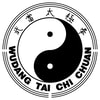‘Qi’ in qigong refers to ‘breath’ or ‘air’ but also relates to the idea that all life and material phenomena are expressions of a primal, unified Energy.
In Chinese culture Man is considered a conglomeration of Qi, a temporary physical entity in a unified energetic field, like a wave in the sea. Our existence, life, health and functionality are dependent upon the movement, balance and abundance of that Energy, bound as our physical form and inextricably linked to universal Energy field for the duration of our lives.
Michael Acton (Eternal Spring) says,
“Pay attention to the sense of your own motion, the warmth of your body, the sense of awareness,
our functional mobility, the sensation of yourself as ‘living’, and you are experiencing and
recognizing the manifestations of Qi.”
The conscious sense of our own body (Body-being) is crucial to Qi development, and that is facilitated by learning to ‘let go’ unnecessary body tension.
Qigong and tai chi exercise routines combine coordinated physical movements (external) with internally cultivated strength giving power (nei gong) to these physical movements. An important catalyst to this process is the self-conscious awareness of the sensation of the movement.
The word ‘attend’ is used here to mean presence or focus, or minded, as in being mindful. Elsewhere being mindful has been defined as simply ‘paying attention’ to whatever it is you’re doing. And here we want to explore how we might better attend to the postures and movements of Qigong and Tai Chi and so appreciate the flow of energy (Qi) throughout the body.
In the practice of Qi gong and tai chi we will focus our attention on body areas specific to efficient and powered movement. In this sense we feel our way in the movement, mindful, for example, of the coordination of feet and legs, tan tien and lower back, waist, shoulders, elbows and hands (Ian Cameron, Feeling your way through the Form’).
There is also developed and nurtured, a sense of smooth, comfortable, and efficient movement, and stillness. Qigong and Tai Chi practice is as much about exploring the efficacy of your movements and specific postures, how it feels physically, where the stress is in muscle groups, joints, how the movement comes together, and how power is focused and issued. This is achieved by ‘being’ in the movement, physically and mentally. And movement that is initiated with body-sense awareness, is slow and relaxed.
All Qi Gong begins from a position of deep physical relaxation, either in motion or in stillness. 'Letting go' our learned 'holding on' to stress and tension is the prerequisite for the smooth and balanced distribution of energetic resources throughout the body. Peter Deadman talks about,
" the practice of lengthening or uncoiling (yang) and settling back or coiling (yin)."
Three Harmonies
I find it helpful to first harmonise the body, the breath, and the mind. First, focus on establishing a natural posture. This is achieved by focusing on the body centre (tan tien), and bending forward on exhalation and back upright on inhalation, a few times, until you feel a comfortable and loosed, erect posture; and then relax into the feet. Secondly, by attending to the breath; following the in breath through the nasal airway, expanding lungs and contracting diaphragm. And then the out breathe. And thirdly, harmonise the mind with the inner smile (you are ‘letting go’ any remaining tension), at the solar plexus, the mouth, and between the eye brows.
There is an enormous range of qigong methods, styles, and stylistic differences within styles. The most popular being, Shibashi, or Tai Chi Qigong, Eight Brocade, Five Animal Frolic, and it goes on. And of course the Tai Chi hand form is itself a qigong set.
Simple Qigong with Lou DeXiu & Ed Hinds,
A simple relaxation exercise (Fang Song) to increase body awareness and mental clarity - go 44.33 mins on video
Wudang Practical Qigong
The Eight Pieces of Brocade with Dr Yang Jwing-Ming, lecture
Baduanjin with Faye Yip
Yin Jin Jing with Luigi Zanini
Immortal Family Baduanjin Brighton PTCC
Shibashi/18 TaiChi Qigong, with Ronnie Robertson
And there are brief, almost meditative’ sets - as illustrated by ‘Three Harmonies’ above, and the following –
LuiHeBaFa Internal Work with Master Yun Yin Sen
And my favorite set
Yiquan Stance Training with Cui Rui Bin, view video from 3mins - 17 mins, four stances.
And
Yiquan with Chang Wangwang
